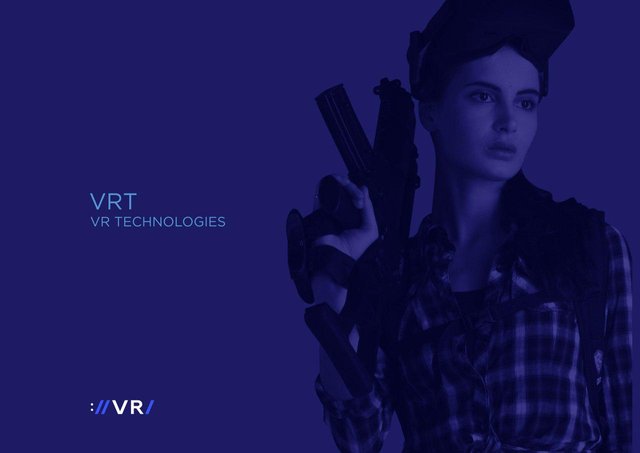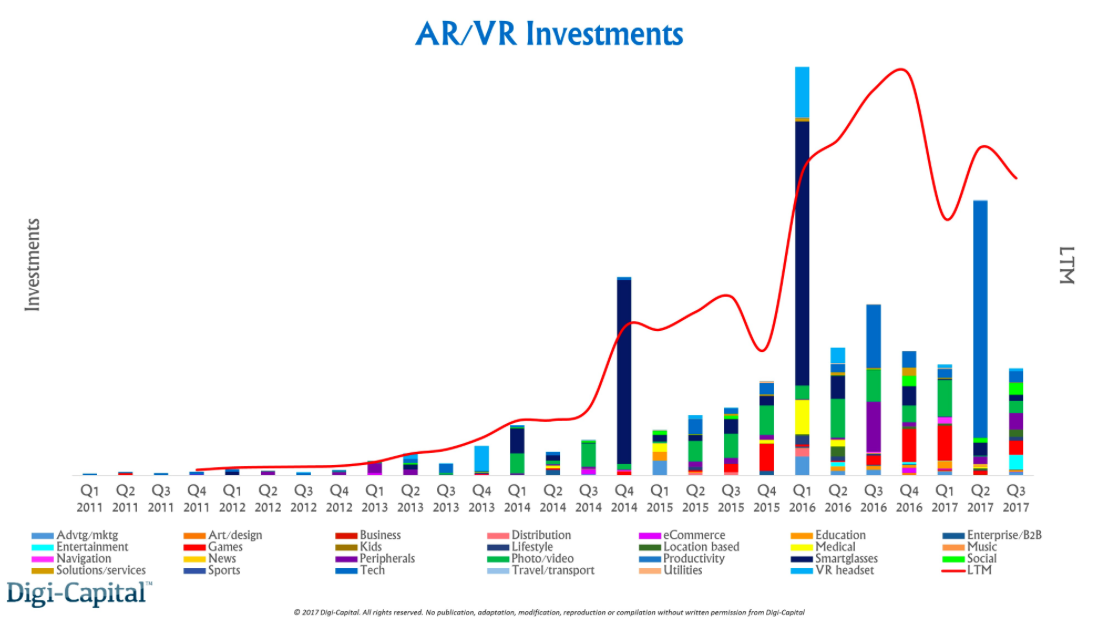VRT — how does it work

Nowadays, Virtual Reality (VR) is actively capturing the entertainment industry all over the world. This is not surprising - thanks to modern technology, virtual reality guarantees a completely new level of perception and opportunities. According to analysts, the VR industry is likely to become a multi-billion-dollar market in the nearest future. Over the past few years, virtual reality has evolved into one of the most promising areas in the entertainment industry that has become the target for largest IT corporations. According to the estimates of Digi-Capital, the total volume of venture and corporate investments in the AR / VR sphere was at $ 1.8 billion in the third quarter of 2017.
However, one of the key problems hampering the full development of the technology is the lack of quality content for VR equipment.
VR Technologies has developed a solution that will attract thousands of developers and authors from all over the world to create and monetize high-quality VR content. This solution is the VRT platform, which is a decentralized VR marketplace. The platform is based on the blockchain technology, which guarantees transparent distribution of funds and enforcement of intellectual property rights. In addition, the platform will host available SDKs and APIs, which will greatly simplify the creation of VR content. As a result, it will attract the widest range of stakeholders to participate in the development of the system.
A unique experience of VR Technologies will allow the team to implement the task. The company has worked on the technology for more than 3 years. It allows immediate transferring of all human movements into virtual reality. Two years of fruitful work have assured achieving of significant success. VR Technologies has learned to transfer into virtual reality entire groups of users simultaneously with each of the participants watching the movements of their partners and being able to interact with them.
The VRT technological solution is a real breakthrough in the VR industry. This is a working project with a completely new level of user interaction. The VRT team signed an agreement with one of the partners on the opening of 30 VR parks on our technology in different cities of Europe for the next 18 months.
At the current moment, the so-called virtual reality parks are gaining popularity, offering HMD users completely new perceptions that are not available at home. Visitors of these parks are able to freely move around the room, not limiting themselves to the computer connection length of the VR helmet. Moreover, they are able to simulate feelings of flight and driving by using special devices in completely new colors.
The key advantage of the project will be that VR Technologies VR parks will become an offline gateway to the marketplace, allowing third-party developers to sell their content without spending money on expensive equipment. In addition, an emulator will be created that will provide developers with a chance to test their products before launching.
For the constant maintenance of interest towards the VR parks project, new game worlds and different scenarios are needed for them. Thus, the network of our parks will be the first customer of VR content on the platform, immediately generating an economic activity on it.
VR trend is obvious - a significant growth of the virtual reality market is expected, and one of the main drivers of this movement will be the video game segment. First of all, it is due to the number of potential customers interested in this product. Goldman Sachs estimates that the existing gaming audience accounts about 380 million people - of which 230 million have gaming consoles, and another 150 million are PC players in developed countries.

If to add the number of Live event viewers and video entertainment lovers to these figures, then the target VR market size can exceed a billion people. Analyst companies predict that VR industry will start earning billions within five to ten years. It is obvious that the level of technology penetration will grow. The content will become more complicated, more interesting and qualitative due to updating of the equipment. There will be a lot of new players on the market that will work in the field of both virtual and augmented reality.
The market will develop quickly enough. Google introduced the technology of broadcasting the game on the TV screen, so that others could see what a person in the helmet is experiencing. There is such a problem: people who have helmets do not often use them. Large companies believe that this is partly due to the fact that others do not understand what their close person is doing.
Blockchain technology, which is the basis of the project, will ensure the transparency of income distribution between the developers and the platform, and also guarantees the observance of copyrights to the products sold. This will result in a more equitable distribution of funds between the creators of the content and the site for its placement. As an outcome, the cost of the final product will become more affordable for consumers.
At the same time, launching an own network of VR parks will create a primary demand for VR content on the platform, which, in conjunction with the free SDK and API, will create an excellent motivation for connecting to the platform of interested developers, and as a result, other market participants.
The popularization of VR is about socialization, not isolation. Under a certain angle, virtual reality can be considered as the Internet, but in fact, its potential is much greater. This is a place where a person can immerse completely, finding much more there than in real life. VR is able to solve a lot of problems, and the VRT project makes the way to the future accessible and real. This solution combines the two most promising IT areas: VR and blockchain.